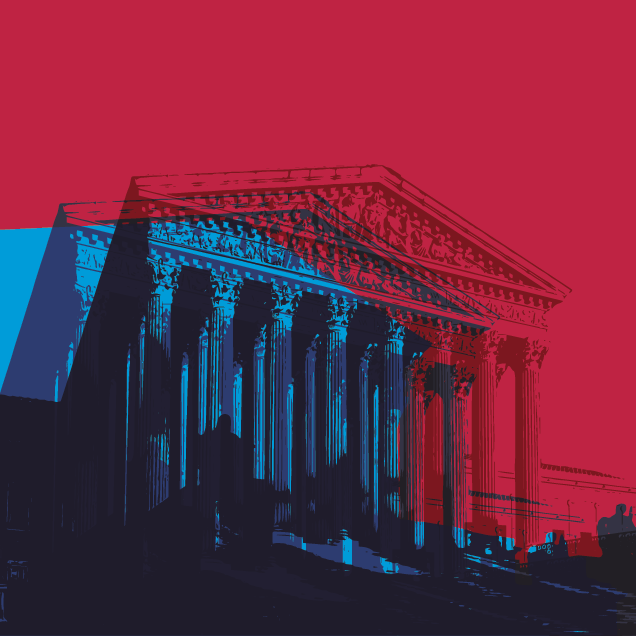The Case for Supreme Court Term Limits
Introduction
As they advocated for the adoption of the Constitution to supplant the Articles of Confederation, Alexander Hamilton and James Madison described the judicial branch as far less to be feared than the legislative or executive branches.1 Without the power of the purse or military might, the Supreme Court could depend only on the people’s willingness to abide by its rulings. The “least dangerous branch,” however, has grown in power and importance over the course of American history, with many now believing it to be far more powerful than a polarized and paralyzed Congress or even the presidency.2
In recent decades, criticism of the Court’s arrogation of powers to itself has been widespread and sparked by its striking down of broadly popular legislative enactments, enshrining or withdrawing fundamental rights and liberties, handicapping the work of the federal and state governments, and creating and extending doctrines to protect political minorities from losing power or law enforcement from being subject to constitutional constraints. These criticisms have been bipartisan and long-standing and are mirrored by the slide in popular support for the Court and a growing belief in its partisan or ideological biases.3
Along with the criticisms of the Court, scholars and advocates have outlined key reforms to try to wall off the Supreme Court from partisan pressures. One of the most widely supported is the proposal to introduce a set term of service for Supreme Court justices in order to create regularity in the appointments process, lower the political intensity of nomination battles, and restore a shared vision of the impartiality of the Court.
In 2018, the bipartisan Commission on the Practice of Democratic Citizenship, a project of the American Academy of Arts and Sciences (the Academy), launched an effort to develop responses to the weaknesses and vulnerabilities in our political and civic life and to enable more Americans to participate as effective citizens in a diverse twenty-first-century democracy.4 This effort included a review of the Supreme Court and its role in our current political crisis. When the Commission issued its thirty-one recommendations for strengthening democracy in the report Our Common Purpose: Reinventing American Democracy for the 21st Century, the recommendations included the proposal for eighteen-year Supreme Court term limits.5
To further the effort to advance this idea, the Academy convened a working group of top experts in the field of constitutional law and Supreme Court reform to develop a comprehensive proposal for enactment of eighteen-year term limits for U.S. Supreme Court justices. In this moment when the rhetoric surrounding Court reform is becoming increasingly politicized, the members of this group feel that the need for a dedicated body to lay out a thoughtful, nonpartisan path forward on this important reform is clear. This paper is the result of the working group’s yearlong deliberations and is intended to fill that void.
The paper first describes why eighteen-year term limits are a vital reform, one that would positively impact on the polarization and partisanship created by life tenure by reducing the incentives for strategic retirements and political campaign–style efforts focused on the nominations process, and by improving the reputation of the judicial system itself. This reform is not only broadly supported by scholars, the legal community, and the public; it would also put the United States in the company of most other nations, as well as all but one of the states of the United States.
The paper then examines various proposals offered to create limited terms for justices and lays out our vision for the best possible approach, one that is both constitutionally viable and achievable in a reasonable time frame. Our recommendation centers on an eighteen-year term imposed via statute. In the sections below, we explain why a statute would be constitutional, how it would work, including the transition period and need for a short period of Court expansion,6 the role of “senior justices,” dealing with unexpected vacancies, and overcoming possible Senate obstruction.
Our consensus position is that this proposal presents the strongest and most broadly supported reform for a Supreme Court that has been much buffeted by reputational challenges and the political polarization that has been so prevalent in the nation. Adoption of eighteen-year term limits will not solve all of our problems, but it would go a long way toward restoring the actual and perceived legitimacy and impartiality of our highest court.
“With increased lifespans since the eighteenth century, a justice may serve for a generation or longer, often decades more than the framers are likely to have imagined. Add to the mix the deepening polarization on the Court . . . and the actuarial luck of the draw, with one president filling many Supreme Court vacancies and another president few or none, and it is no wonder the power to make Supreme Court appointments has become such a contentious part of the presidential election process.”
—Our Common Purpose: Reinventing American Democracy for the 21st Century

